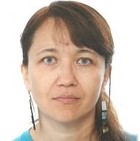Invited Speaker

Dr. Gordana Medunić
Professor, Department of Geology, Faculty of Science, University of Zagreb, CroatiaSpeech Title: Human and animal health risk posed by increased environmental selenium leached from karst coal deposits (Raša Bay, Adriatic Sea, Croatia)
Abstract: The Raša Bay (north Adriatic Sea, Croatia) has been receiving inorganic and organic pollutants by inflowing streams laden with untreated coal mine waste water discharges for decades. Local superhigh-organic-sulfur (SHOS) Raša coal is unique based on its anomalously high levels of S, Se, and U. The local area (some 600 km2) has experienced adverse effects of SHOS coal mining, preparation, combustion, waste storage, and transport in the past. Soil is severely polluted with S (up to 4.00%), Se (up to 6.80 mg/kg), Cd (up to 4.70 mg/kg), U (up to 25 mg/kg), and PAHs (up to 13,500 ng/g). Moreover, they were found to be increased in sediment, surface water, locally grown vegetables, and local birds. Decreased Se values in a coal-combustion waste, exposed to rain, indicates on potential leaking problems. Namely, the study area belongs to vulnerable karst environment which promotes Se mobility due to high Eh/pH conditions. Marine coastal systems are particularly vulnerable to contamination transported and discharged by inflowing rivers. Moreover, the study area is vulnerable karst which is highly susceptible to pollution due to its complex hydrodynamics and low filtration capacity. Hereby, the aim of my study is to evaluate an impact of karst groundwater circulation patterns on uranium and selenium hydrogeochemistry. Additionally, the content of selenium in the local environment, food, and animals, constantly under the influence of Raša coal, will be investigated. The study will primarily determine the content of selenium (and other elements) in the tissues of wild birds, as well as eating habits of the local population to determine the possible adverse effect of increased concentrations of selenium in food on the health of consumers. Field-work will be conducted on water discharges from closed Raša coal mines which still host some 4 million tons of coal. Potential health risks and the negative impact of both elements on human health are well documented in the literature. Coal is one of the significant sources of the two contaminants. Therefore, we will systematically investigate their behaviour and fate through a hydrogeochemical research. The study could have long term implications on canon of knowledge about the relevant research on metal(loid)s' (S, Se, U) cycles in natural water. The topic has not been addressed at all in terms of the study locality, partly due to analytical difficulties and lack of expertise, and partly due to a long period of restrictive regime in publishing papers on the problem of radioactivity in Croatia prior to 1990. The access to the locality was forbidden as certain horizons of SHOS coal were so radioactive that the Raša coal was planned to be exploited as a resource of uranium for nuclear power plants. This research will reveal levels of elements (primarily selenium) in tissues of wild birds and plant foods; based on eating habits of the local population, it will be possible to draw concrete conclusions about the possible adverse effects of the studied elements on their health.